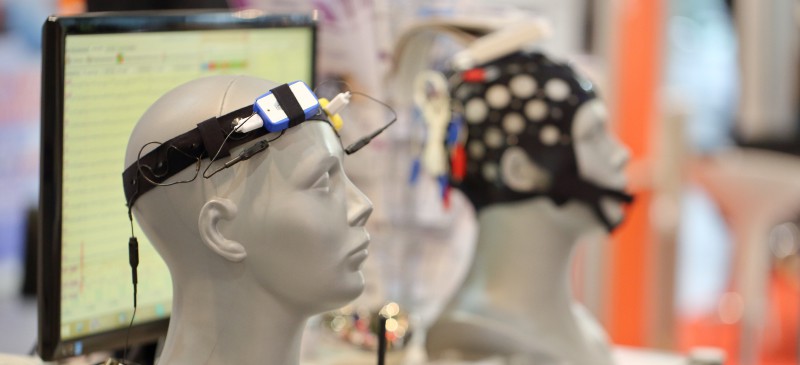This Dr. Axe content is medically reviewed or fact checked to ensure factually accurate information.
With strict editorial sourcing guidelines, we only link to academic research institutions, reputable media sites and, when research is available, medically peer-reviewed studies. Note that the numbers in parentheses (1, 2, etc.) are clickable links to these studies.
The information in our articles is NOT intended to replace a one-on-one relationship with a qualified health care professional and is not intended as medical advice.
This article is based on scientific evidence, written by experts and fact checked by our trained editorial staff. Note that the numbers in parentheses (1, 2, etc.) are clickable links to medically peer-reviewed studies.
Our team includes licensed nutritionists and dietitians, certified health education specialists, as well as certified strength and conditioning specialists, personal trainers and corrective exercise specialists. Our team aims to be not only thorough with its research, but also objective and unbiased.
The information in our articles is NOT intended to replace a one-on-one relationship with a qualified health care professional and is not intended as medical advice.
Neurofeedback Therapy Potential Benefits, Especially for Brain Conditions
October 29, 2018

Although Neurofeedback Therapy (NF or NFB) has been utilized by therapists since the 1960s to help treat patients with a wide range of neurological and mental health problems, it’s still not a widely available treatment option — especially compared to the use of mood-altering medications such as antidepressants. However, a growing body of research suggests that neurofeedback is effective or at least helpful in the treatment of common disorders such as anxiety, ADHD and insomnia, and it poses fewer risks consider it’s drug-free. (1)
Neurofeedback is one of the oldest forms of biofeedback therapy, in which subjects respond to a display of their own physiological processes. In the case of neurofeedback (neuro means relating to the nerves and brain), participants see and respond to changes in their own brainwaves, a form of electrical activity of the nervous system.
Neurofeedback machines, especially EEGs, help measure how activity in different regions of the brain either increases or decreases depending on someone’s feelings and actions. This helps with training in self-regulation — and self-regulation allows for better control over one’s stress response and general improvements in functions of the nervous system.
What Is Neurofeedback Therapy?
The definition of neurofeedback is “The technique of making brainwave activity perceptible to the senses (as by recording brain waves with an electroencephalograph and presenting them visually or audibly) in order to consciously alter such activity.” (2) Electroencephalography (EEG) feedback is another way to refer to neurofeedback.
Is neurofeedback effective? Overall, research results have been mixed, since some studies have been inconclusive about neurofeedback’s effects and some have shown no positive outcomes. (3) However, findings from many studies do suggest that neurofeedback can help individuals dealing with a number of mental health/neurological issues, such as: (4)
- Stroke
- Brain injury including aneurysm or concussion
- ADHD
- Autism spectrum disorder
- Anxiety
- Sleep problems
- PTSD (post-traumatic stress disorder)
- Parkinson’s disease
- Eating disorders
- Addiction disorders
- Migraines
- Chronic pain
Neurofeedback vs. Biofeedback Therapy
- The goal of biofeedback therapy (or biofeedback training) is to help patients gain control over bodily processes that are normally involuntary, or done automatically without conscious control or thought.
- Biofeedback works by monitoring a patient’s bodily processes such as their heart rate, skin temperature, blood pressure, brain waves and other conditions. Techniques that are involved in biofeedback therapy include operant conditioning and relaxation exercises. Patients use these techniques learn to modify their physiology for the purpose of improving their physical, mental and emotional health.
- There are several types of biofeedback training, some of which include: heart rate variability (HRV), thermal, muscular (EMG) and neurological (EEG) therapies.
- All types of biofeedback use some type of computer or monitoring device. For example, electronic sensors, EEG/QEEG monitors, blood pressure monitors and other devices may be used.
What’s the purpose of neurofeedback therapy? How does neurofeedback work?
Neurofeedback is ultimately intended to provide information about the brain in order to help the nervous system function more optimally. Information is gathered about specific brain waves, including the percentage of brain waves taking place in specific areas of the brain (called the amplitude) and how well brain waves from different regions are working together (whether they are “regulated or dysregulated”). Neurofeedback can also provide information about how a patient’s brain activity compares to their peers (others of the same gender and age).
According to neurofeedback theory, when specific pathways in the brain are dysregulated, over-activated or under-activated, this is when symptoms occur. As the Hull Institute, who utilizes NeurOptimal ® Advanced Brain Training Systems to perform neurofeedback, describes it, “Simply put, a dys-regulated brain tends to be over-stimulated when it is supposed to be calm and under-stimulated when it is supposed to be attentive.” (5)
If neurofeedback monitoring/recording can pinpoint a specific location or neural network in the brain that has been impacted by injury, trauma, etc. then steps can be taken to help regulate these pathways.
Where can you get neurofeedback and what is the cost?
The Association For Applied Psychophysiology & Biofeedback (AAPB) offers resources on its website to locate a neurofeedback/biofeedback therapist in your area. Typically, patients will attend neurofeedback sessions two or three times a week, for a total of 10 to 40 sessions over the course of several months to a year. Most sessions are 30 to 60 minutes long.
Why hasn’t neurofeedback therapy gained more traction as a mainstream intervention? Some possible reasons include: because neurofeedback equipment is expensive, not many clinicians are trained in using the equipment properly, and people are skeptical about the results they can achieve.
Neurofeedback’s cost can sometimes be a hindrance to patients giving it a try. Sessions can range from $50 to $130 each. Will insurance cover neurofeedback? Some will, but it usually depends on the specific plan and diagnosis.
Not all types of neurofeedback require working with a clinician; it’s possible to gather information about a condition you’re dealing with and then take steps at home to start seeing improvements.
What are ways you can use neurofeedback at home? It’s best to first meet with a a trained therapist/clinician who can teach you skills like:
You can then call on these techniques when you’re feeling stressed or your symptoms worsen.
5 Potential Benefits of Neurofeedback Therapy
1. Can Help Manage Anxiety and Depression
Neurofeedback is often used in combination with psychotherapy to help treat conditions such as anxiety and depression. How does neurofeedback work for anxiety? Some practitioners use techniques such as Cranial Electrotherapy Stimulation (CES) to help “quiet down” parts of the brain experiencing over-stimulation that leads to anxiety, such as regions in the limbic system that control feelings like nervousness and restlessness. (6)
The CES device is a type of neurofeedback machine that produces a low-amount of electrical current in a specific frequency and is attached via ear clips or adhesive electrodes to the forehead and ears. It produces a slight tingling sensation and is believed to work by resulting in deactivation in cortical and subcortical regions. (7) Although the exact way they work is still unknown, CES devices are FDA-approved to treat depression, anxiety and insomnia, and they can be used in both the home and clinical settings.
Other methods/therapies that are used to curb anxiety based on a patient’s unique neurofeedback information include: meditation, hypnosis, acupuncture, polarity, Qigong and Reiki.
2. Used to Treat ADHD
The American Academy of Pediatrics considers NFB to be a level two, evidenced-based practice in the treatment of ADHD. A 2014 randomized control trial published in the Journal of Pediatrics that included 104 school-aged children found that:
Neurofeedback participants made more prompt and greater improvements in ADHD symptoms, which were sustained at the 6-month follow-up, than did cognitive training participants or those in the control group. This finding suggests that neurofeedback is a promising attention training treatment for children with ADHD. (8)
After the six months post-intervention follow up, neurofeedback participants maintained their improvements in terms of scores for executive functioning and hyperactivity/impulsivity.
3. Can Support Recovery from Stroke and Brain Injuries
Recently, neurofeedback has been used in many treatment settings — along with approaches like physical and occupational therapy — as an alternative method for management of conditions including strokes, post-traumatic events, headaches, injuries, chronic muscle tension and cancer recovery.
Although it doesn’t work for every patient, some find that it can help improve coordination, balance, focus, relaxation, speech, memory and other mental processes. Neurofeedback can also play an important role in management of post-stroke and post-traumatic headaches, and in primary headaches like tension headaches or migraines. (9)
According to a Washington Post article, during neurofeedback sessions “pulsed signals are sent to the brain. Research suggests that these signals enable the brain to revive its communication channels, which can become impaired after a brain injury.” (10)
According to a 2017 systematic review that focused on neurofeedback as a form of cognitive rehabilitation therapy following stroke,
NFT relies on operant conditioning to stimulate the neuroplastic abilities of the brain. Physiologically stimulating specific band frequencies over damaged areas stimulates cortical metabolism. NFT is also used to counter excessive slow wave activity (i.e. theta waves and sometimes alpha waves) that typically follow strokes. (11)
4. May Help Manage PTSD
Neurofeedback therapy is now commonly used to control symptoms of hyperarousal, including those associated with PTSD, panic disorders, insomnia and ADHD symptoms. A 2016 randomized control trial found that “Compared with the control group, neurofeedback produced significant PTSD symptom improvement in individuals with chronic PTSD.”
Traumatized individuals with PTSD that were included in the study, all of whom had not responded to at least six months of trauma-focused psychotherapy, were compared to a waitlist control group. At the end of the study, which included 24 sessions of neurofeedback (NF), the NF subjects were found to have statistically significant improvements in measures of affect regulation, identity impairment, abandonment concerns and tension reduction activities. (12)
The researchers also point out that NF may be “particularly helpful for traumatized individuals who are too anxious, dissociated or dysregulated to tolerate exposure-based treatments.”
5. Can Help Treat Insomnia Symptoms
A 2001 study published in Applied Psychophysiology and Biofeedback found that two forms of neurofeedback treatments (sensorimotor protocol and a sequential, quantitative EEG model) helped to treat people suffering from insomnia symptoms. After undergoing 20 15-minute biofeedback sessions, patients experienced significant decreases in dysfunctional symptoms like daytime sleepiness and hyperarrousal during the night. (13)
Related: What Is Biohacking? 8 Ways to Biohack Yourself for Better Health
Risks and Side Effects
Is neurofeedback therapy safe? Generally speaking, yes, but it’s likely not going to be a quick-fix or the answer to all your problems. Neurofeedback therapy seems to work best when used in conjunction with other treatments that help you to change your behaviors and thoughts, such as cognitive behavioral therapy (CBT), relaxation techniques like meditation, etc.
Generally speaking, because neurofeedback/biofeedback does not involve taking drugs, many consider it to be safer a safer alternative than other treatments. It is possible to experience side effects from neurofeedback therapy, which might include: increased anxiety, brain fog, poor concentration, preoccupation with getting results, restlessness, fatigue and trouble sleeping.
The reason some experience these effects is mostly due to changes in brain waves, uncovering emotions that can be hard to deal with, and getting used to electrical adjustments. If you experience side effects following treatments, it’s a good idea to keep your doctor informed and discuss other treatment methods that may be a better fit.
Final Thoughts
- Neurofeedback Therapy (NFB) is the technique of making brainwave activity perceptible to the senses as by recording brain waves with an electroencephalograph machine. Brain waves are presented visually or audibly in order to consciously alter such activity.
- Electroencephalography (EEG) feedback is another way to refer to neurofeedback. Neurofeedback therapy is a form of biofeedback training in which participants respond to a display of their own physiological processes in order to improve self-regulation.
- Benefits of neurofeedback therapy can include helping to treat conditions such as: stroke and brain injury, ADHD, autism spectrum disorder, anxiety, sleep problems, PTSD (post traumatic stress disorder), migraines, Parkinson’s disease and more.
- Neurofeedback therapy is intended to be used in conjunction with other treatments that help you to change your behaviors and thoughts, such as cognitive behavioral therapy (CBT), physical or occupational therapy, acupuncture, relaxation techniques like meditation, etc.











